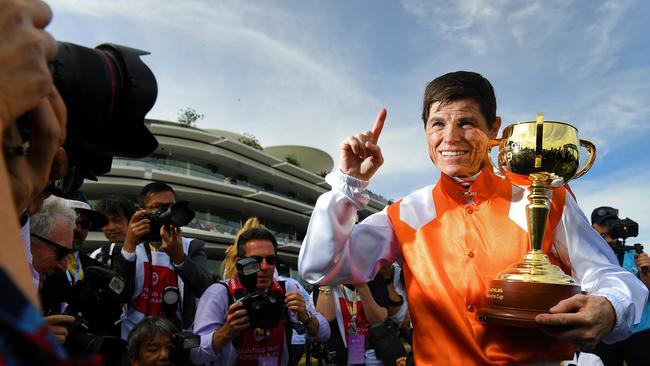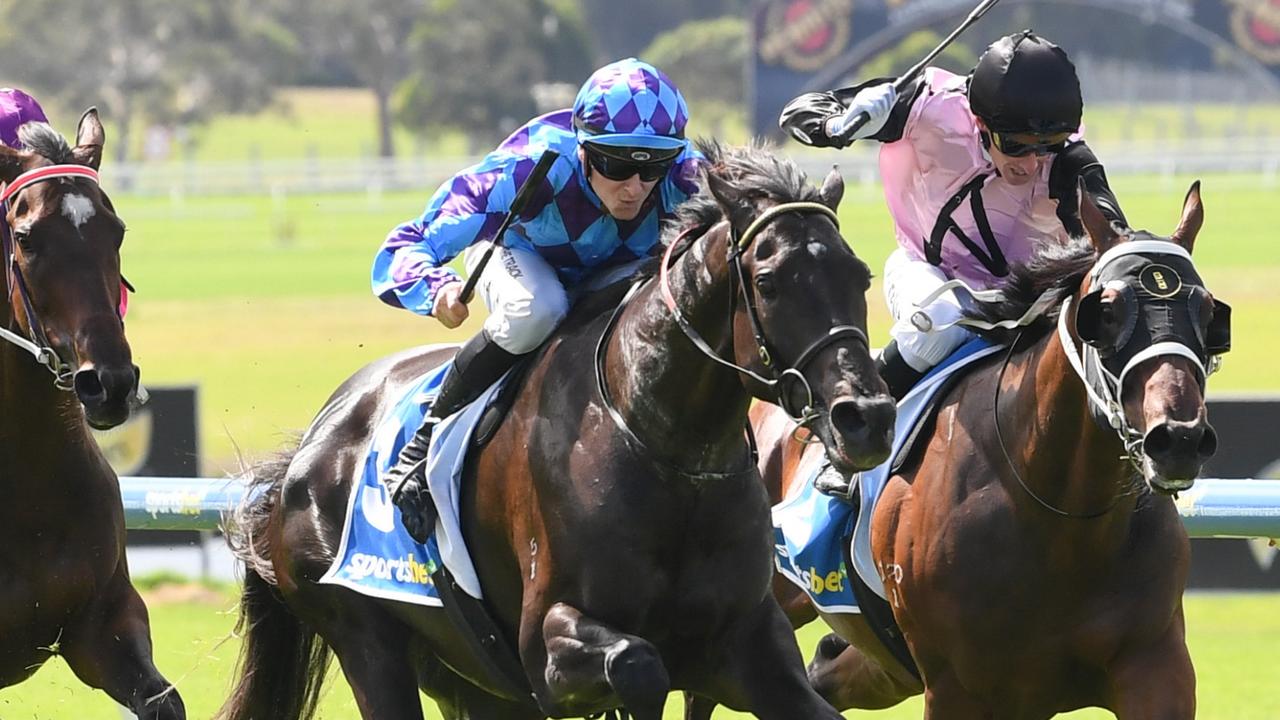
Because without all those owners of Vow And Declare and Craig Williams to steer it home on Tuesday at Flemington, it would have been hard to find a good news story across the entire spring racing carnival.
Crowds for the Melbourne Cup Carnival have been down from last year and a chilly forecast of 14 degrees in Melbourne does not augur well for Saturday’s Stakes Day.
Televisions ratings? Down a disastrous 23 per cent on Tuesday for Network Ten’s first Cup in two decades, while last Saturday its Derby Day coverage was beaten by the Seven Network’s broadcast of the Golden Eagle from Rosehill.
Then there’s the betting figures. Soft. Tabcorp, the owner of the TAB, saw its wagering drop 6 per cent on Tuesday, while corporate bookmakers also reported falls for the Cup. It continued a trend throughout spring.
It all should make stark reading for racing authorities, though it is a big question as to whether they get the message. Already some excuses are being readied, though there are some firm rebuttals available.
Crowds? Terrible Melbourne weather. Yet, Tuesday was a sunny day and there were more people at Flemington two years ago when its $120m members stand was only half built. The Birdcage looked great. Sure, but its glory days are over and the corporate and political set prefer the AFL grand final and men’s Australian Open tennis final.
In NSW, The Everest was a mighty race at Royal Randwick a few weekends ago — and is now the other big high point of the spring. The field was star-studded and plenty tuned in. There was interest in who owned the horses via “slots”, and the competitors were easy to track in lead-up races. But even that crowd was down from last year, though Racing NSW has at least managed to engage with a younger fan base via The Everest.
Then there are the ratings. The move by the Victorian Racing Club to jump to Ten, after being with Seven since 2002, has so far not been a wise decision. Yes, it is year one of a five-year deal but Ten is the third-ranking free-to-air network and the Cup Carnival was not big enough of a deal to carry it higher in the ratings. Ten also promised a new, younger audience. But ratings figures suggested they didn’t tune in.
The VRC’s decision to keep its beloved Cup carnival separate from other Victorian racing rights meant this scenario was always going to happen if it chose a different broadcaster. So you have Seven showing Victorian racing one week, Ten the next week, during which Seven competes against it with NSW racing.
Why not package up all the Victorian rights together? Apparently the VRC knows better.
Wagering is down due to a downturn in consumer spending habits in a softening economy, but authorities have also made big grabs via their race-field fees in recent years. Then there’s the state government point-of-consumption tax, which has had bookies budgeting to make losses this year.
One argument has it that wagering exploded over the course of the current decade anyway and was due a breather as the economy slowed. But racing can’t take credit for that either. The rise of the mobile phone — so handy for betting — and the frenzied entry to the Australian market by mostly digital-only corporate bookies drove a rise in betting.
But the point-of-consumption tax, a decrease in wagering operators in the market after a series of mergers and acquisitions (with more to come) and credit betting and advertising crackdowns have seen the corporate bookies in particular not promoting their racing wares with the enthusiasm of previous years.
Less promotion equals less betting, which equals less funding for the industry.
Then there is the most controversial matter of them all: the ABC’s report about cruelty towards horses, many of them former racing thoroughbreds. Racing authorities did not cope well at first, but regained some ground with a series of key announcements to help welfare measures. Unfortunately they did not resonate as much with the wider public as the original report.
In short, racing has failed to recognise and or engage with the changes in the public’s expectations and a general community move against animal cruelty that’s been building for at least a decade.
It all adds up to a feeling of stagnation. Racing has never developed a national long-term engagement strategy as the states — particularly NSW and Victoria — continue to battle each other. That fight has caused attention and money to be sucked from other states, where racing has been diminished. It is hard to get national attention for a sport which is big in only two cities.
The good news is that racing bodies in NSW and Victoria at least have plenty of financial assets and money to build from. The racecourses have plenty of land that can be used to generate revenue. The end is not nigh, racing is not going broke.
But the money must be spent wisely. It cannot continue to be used for unsustainable prizemoney. It doesn’t move the needle with the wider public.
Authorities need to lay down their weapons and try to make the sport exciting again. Spend money on engaging new and old customers, promote heroes and especially promote animal welfare.
Innovation should be the order of the day. Is there a way for horse ownership shares to be easily traded publicly? Could the fees from that be used for animal welfare? Ideas need to be tested.
The bottom line is racing needs to stop looking inward. The danger, though, is that once racing stops the infighting, sticks its head up and gazes around for attention, it may find fewer people than ever want to look at it.




Thank goodness for those ordinary Aussies. The bloke who works in construction and bred the horse in his spare time, the headmaster, deputy lord mayor, suburban draughtsmen and that ex-NSW state backbencher. Plus that veteran jockey who won his first Melbourne Cup in 16 attempts.